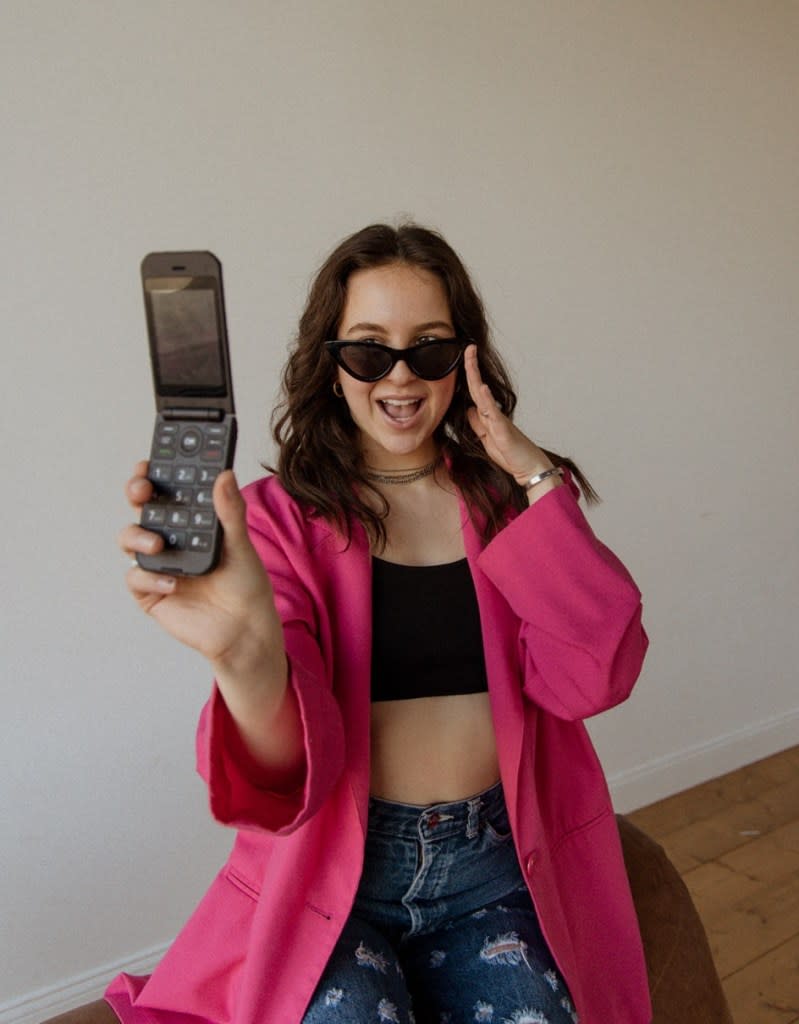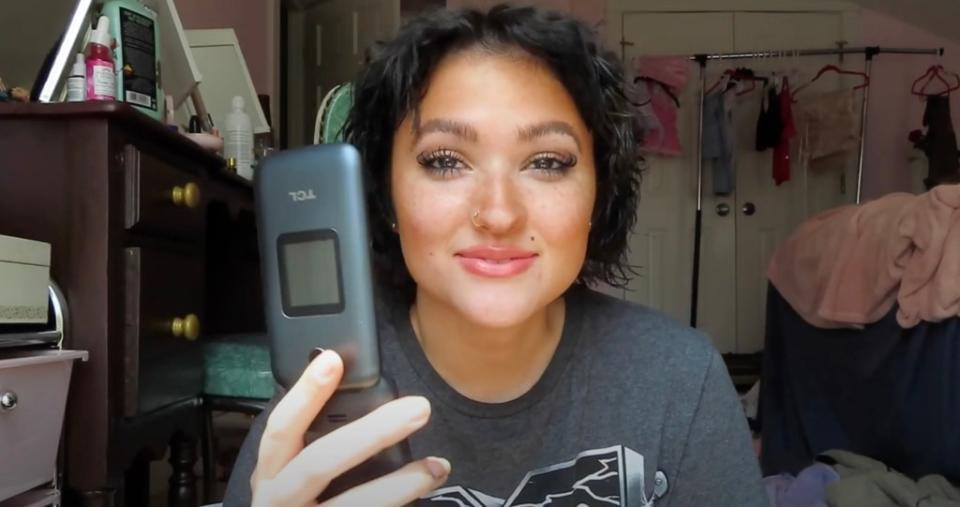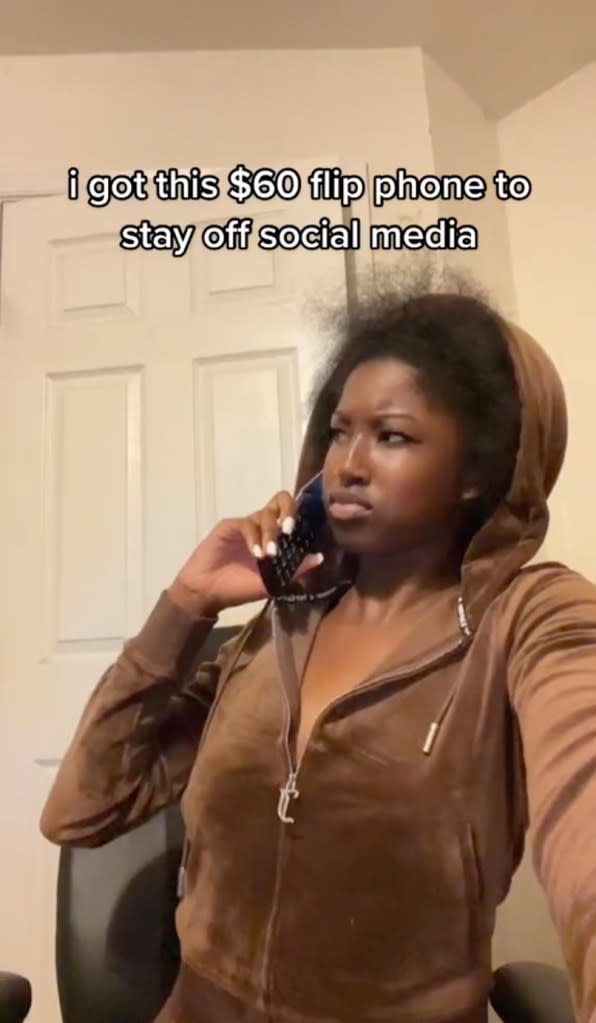Gen Z is giving up smartphones for flip phones — but life without a map app is almost impossible

Everyone is flipping out — but that might be a good thing.
More and more school districts across the country are banning cell phone use. Politicians like Ron DeSantis are barring kids under 14 from social media. Social psychologist Jonathan Haidt’s March book “The Anxious Generation: How the Great Rewiring of Childhood Is Causing an Epidemic of Mental Illness” has shot to the top of the bestseller charts.
But some Zoomers themselves are taking matters into their own hands in an unexpected way. More and more digital natives are swapping their smartphones out for “dumb phones” — like flip phones and Nokias — to reclaim their time and their mental health.
The Post spoke with four Gen Zers who’ve gone retro with their cell phones:
Sammy, 19: I was completely addicted to my iPhone

Sammy was just 12 when she got her first iPhone — and she was the last kid in her entire grade to do so.
But after that, she was all in: Snapchat, Instagram, TikTok.
“The endless scroll was just so addicting,” she told The Post.
And it only got worse a few years later when the world locked down for the pandemic.
“It almost felt like I couldn’t get off TikTok,” Sammy, who asked to withhold her last name for privacy reasons. “I’d be on it for hours and not sleeping, and it was hard for me to put my phone down. That’s when it really felt like an addiction.”

Now a 19-year-old sophomore, she can be spotted on the University of Illinois campus with an unlikely accessory: an AT&T Cingular Flex flip phone.
During her freshman year, Sammy and a few friends resolved to get flip phones after a long conversation about how their smartphones had degraded their quality of life.
“We were talking about how these are supposed to be the best days of our lives, but we’re just on the phone all the time — even when we go out to parties, everybody’s just scrolling on their phones,” she said. “It feels like we’re almost missing out on something that our parents and past generations hyped up.”
Even though she still has her iPhone, now she goes out with just her flip phone — in case of emergency — several times a week when she needs to unplug: “It definitely keeps me in the moment when I go out. And it’s definitely a talking point at the bar.”

Sammy says that, even though parents and teachers might want to help Zoomers break their screen addiction, it’s probably a losing battle.
“When my mom told me to get off my phone, it was just annoying. If my teachers said you need to be off your phone in class, I’d be like, ‘Well your class is boring.’”
Even when she knew they were right, she said, “It’s something that they’re not able to help with, even if they want to — because I wasn’t wanting help from any of them.”
Alena Vandaele, 20: ‘It’s a fashion trend, too’

“I feel like the iPhone kind of cut my childhood short,” 20-year-old Alena Vandaele told The Post. “But using a flip phone reminds me of the very early 2000s when I was little, and it’s really nostalgic.”
Vandaele, a Homegoods sales associate in Chicago, first got a smartphone at age eight and has been on Snapchat and Instagram since middle school.
“I grew up constantly on my phone,” she said.
But two years ago, at age 18, she decided to make a change and purchased a flip phone from Verizon: “I had been thinking about it for a while, because I was so sick of social media. I was just desperate to get away from the internet.”

Now, she added, “I enjoy the world more. It helps me soak in what I’m experiencing in life.”
The Zoomer also predicts that, as early 2000s clothing comes back into style, so will the era’s technology — even as a fashion accessory.
“I think this is going to become a trendy thing,” she predicted. “If your style is like Y2K, it definitely makes your aesthetic look way more put together. It feels very authentic to the early 2000s.”
Aicha Yoda, 25: It’s a conversation starter
Aicha Yoda spoke to The Post via her smartphone, while on a social media cleanse.
“It’s just so much better,” the psychiatric nurse from Frederick, Maryland, told The Post. “Your reality is really just what you make of it. You can just unplug, and then, all of a sudden, all the pressures of social media just don’t exist to you anymore. People are only in your world if you allow them to be.”

Yoda, 25, first traded in her iPhone for a flip phone for a month, in observance of Ramadan in 2022.
“It was my own idea. I’ve just always longed to go back in time to the whole 2000s thing — even with the styles and the clothing,” she said.
She decided she wanted to go back to a flip phone — which she’d had from ages 10 to 14 — because it reminded her of simpler days.
“Because it was a flip phone, I don’t think it impacted my childhood at all. I would play outside, go to the creek, walk around the cul de sac, go on the zip line,” she recalled.

But when she got an iPhone at age 14, her relationship with her cell phone took a turn for the worst.
“I started comparing myself a lot more on social media, especially in my teen and adolescent years when my body was developing and I was a late bloomer,” Yoda said. “It really affected my self-image.”
After nearly a decade on her iPhone, she knew it was time to ditch it.
“I just found I was on my phone way too much,” she said. “But it was actually pretty hard to adjust to the flip phone. I felt like it was kind of like a reflex to always reach for my phone when I was bored in any sort of idle moment.”

After Ramadan, she went back to her iPhone but decided to keep her flip phone on hand for days that she needs to unplug: “I pick it up whenever I want to go do something and be present in the moment and actually experience what I’m doing.”
Now Yoda usually uses the flip one day a week, when going out with friends: “A lot of strangers use it as a conversation starter. It actually attracts a lot of attention. Everyone acts like I’m using a rock for a cell phone.”
Andrew Kim, 22: I finally broke up with my iPhone

Andrew Kim was tired of being bombarded by his wealthy friends’ social media photos — fancy vacations, luxury cars — and feeling bad about it.
Just as bad, he felt compelled to chase likes.
“Every time I posted anything I would constantly be refreshing my page,” Kim told The Post. “I was obsessed with it.”
So he took a drastic step and made it impossible to torment himself.

The 22-year-old dental student traded in his iPhone, which he’d had since he was 10, for an AT&T flip phone during his sophomore year at Oregon Health & Science University.
“I really wanted to separate myself from my phone,” said Kim, who grew up in South Korea. “I just didn’t like the idea of being dependent on technology, when there’s so much more to life than that.
“My flip phone helped me stop comparing myself so much. It was the most present I’ve ever felt. I was reinvigorated in my hobbies, like painting and crocheting, again. It became easier to pay attention to other things I like to do.”
He said that, while none of his friends wanted to join his embrace of old-school tech, “a lot of them said they wished they had the courage to do it too.

“I think more and more young people are wishing their life was grounded in reality, rather than the virtual world.”
But today’s real world makes it almost impossible to communicate without a smartphone.
“Navigation was one aspect I never took into consideration,” he said. “I had to look up any place I wanted to go to on Google Maps first [on a laptop] and take mental notes on how to get there. It made traveling alone unexpectedly hard.”
After two years of using his flip phone, Kim admitted, he felt forced to go back to his smartphone at the start of this school year — because he couldn’t access messages from professors and classmates about assignments in a timely manner without it.
That said, “I’ll be straight back to my flip phone immediately after graduation.”
